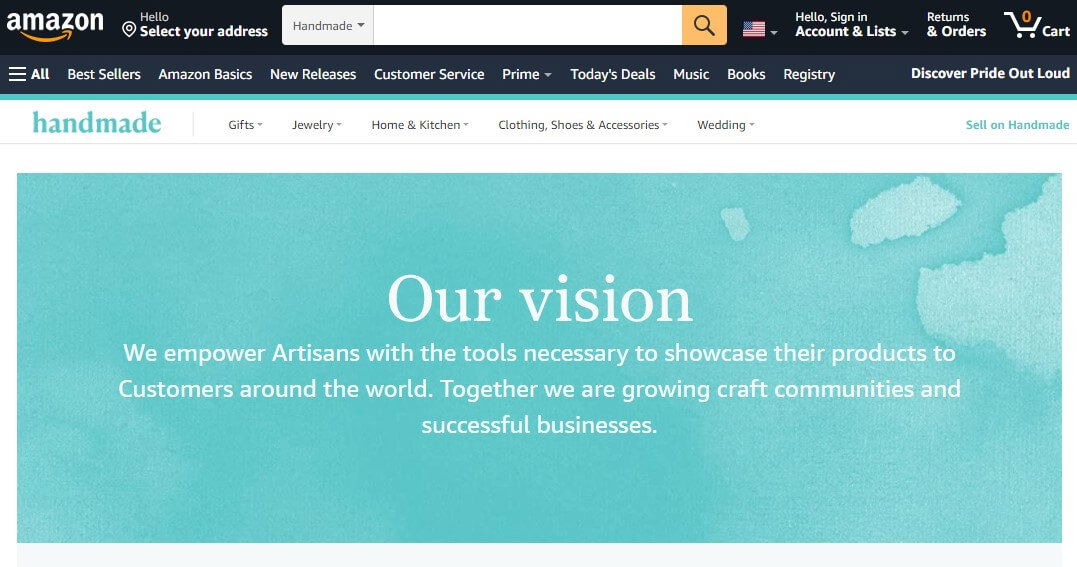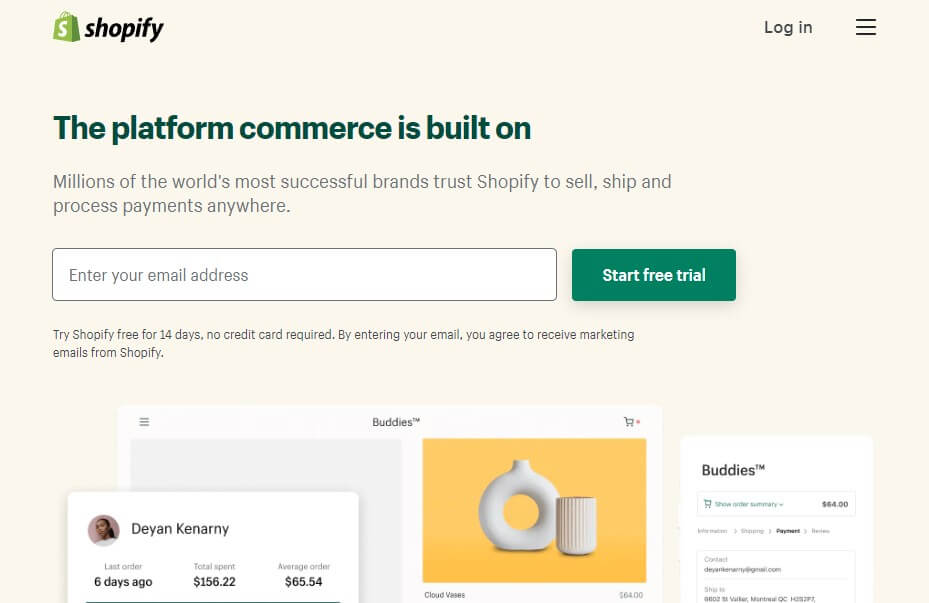Where can I sell my handmade products online in 2024?
We show you the best places to sell your craft products online - updated for 2024
There are now quite a number of options to consider when you start thinking about trying to sell your handmade products on the internet - for first time sellers it is often very difficult to know where to start, so we have compiled this handy guide to the most popular options.
Choosing the right place to start selling your handmade items can be quite overwhelming - there are many different pricing models to factor in to establish how much each option will ultimately cost you. There is no best option for selling online, as it depends hugely on what you sell, how much you sell it for and the volume that you sell your products at. Many sellers tend to choose at least two options: one marketplace and one “hosted” version as they can then market these in different ways to build unique customer bases.
Ready to take your Etsy store to the next level?
Discover how Craftybase is the Etsy inventory software you've been missing out on: track raw materials and product stock, COGS, pricing and much more. It's your new production central.
Selling your handmade products on Etsy
Etsy is an online marketplace that specialises in selling handmade or vintage items as well as art and craft supplies. You can signup for a “seller account” which costs nothing, but you will have to provide a credit card or payment method before you start to list your products.

There is a flat fee of $0.20 per item that you list on the site, and on top of that you pay 6.5% of the sale price as a commission to Etsy whenever your items are sold.
Get the lowdown on all of Etsy’s fees, including offsite fees, so you can price your products better and make more money - see our Complete Guide to Etsy Fees 2024 →
Etsy is a great option for new craft sellers starting out as there is no major upfront costs involved - you can list a couple of things and see how they go. As the site itself is quite popular and appears in search engines you have a great chance of having people discover you without you needing to do a lot of expensive marketing.
Being a member of Etsy, you have an existing community of sellers that you can ask for business advice if you need it.
Amazon Handmade
Amazon’s relatively new ecommerce channel for handmade sellers, called Amazon Handmade, is a terrific option to consider if you are looking to expand outside Etsy.

With instant access to 250 million people who currently shop on Amazon, it can really help take your products instantly to a large range of new customers and markets. Other benefits include no upfront fees, including waived monthly seller fees for handmade sellers.
Read our guide on how to apply for Amazon Handmade →
Shopify

Shopify is one of the leading e-commerce web platforms that allows you to create a flourishing online store for your handmade products.
Etsy is a great place for crafters to get known and build the business up, but you may eventually want to make your own mark elsewhere on the internet. Shopify is a great alternate e-commerce platform.
Unlike Etsy, which places restrictions on the kinds of items you can sell, Shopify lets you sell whatever products or services you want (as long as it’s not illegal). You can sell direct to the consumer without having to worry about a go-between or transaction fees.
Shopify also integrates with Craftybase to help make it easier to manage your inventory and raw material stock levels.
Best of all, Shopify has great sales tools, including website analytics, social media integration, customer profiles, and a host of fulfillment solutions, so you don’t have to rely on Etsy to run your business for you.
It has a simple and straightforward interface that requires no knowledge of coding or complex web building experience - all you need to do is signup, provide some details on your business and create your listings.
How to manage your inventory on Shopify →
Bigcartel
Bigcartel is a site that provides an easy way for artists and makers to create a simple online storefront.

This means that you will be able to create your own site and configure the colours and images so it appears to be completely your own site, but there isn’t a central place that potential customers can find your products - you’ll have to do all marketing yourself. Bigcartel offers a range of different monthly fees, depending on how many products you wish to sell.
eBay
eBay is one of the oldest and largest online marketplaces on the internet. It is however not dedicated exclusively to handmade goods so it can be difficult to get your products noticed on this site.

Creating an eBay account is free, and you pay per item you list and sell. Insertion fees are paid whenever you list a new product on the site, and these fees vary by the selling price of the item, the selling method (see below) and which country you are based in.
As eBay is also an auction site, you can choose to sell via an auction method (e.g. highest bidder for your item gets to buy it) or list with a fixed cost - either method attracts a “final value” fee when you sell a product. For both methods, if you don’t sell the item you don’t pay the “final value” fee.
Wix
We’ve talked a lot about Etsy and Shopify, but If you don’t want to depend on them for control of your site, you can use website builders like Wix. Wix offers a low-cost alternative to building an online store, and you have full control over your products and website.

You don’t need to know how to code to make a Wix website. This powerful website builder has an easy-to-use interface that makes it a snap to learn. It comes with a wide variety of pre-built templates, including templates for building online stores. Customizing these websites is a breeze too, so you can decorate your online storefront however you’d like.
Wix is also cheaper than using Shopify and provides more creative freedom, not to mention being easier to use for makers that don’t have much web design experience.
The best part? There’s also a Wix integration with Craftybase, so you can still maintain a firm grip on your inventory management even when you’re off Etsy.
Build a website yourself
Essentially this involves employing a web developer to build a custom website for you. Depending on your requirements, this can be quite expensive and cost anywhere from $500 - $10,000 or more. You’ll also need to purchase a domain name, which can cost anywhere between $20 - $200 depending on the type of domain name you would like and if it is available to purchase.
In addition to this, you will need to pay regular hosting costs, which will be determined by the amount of traffic you drive to your site. Depending on your shopping cart choice, you will also need to pay transaction costs on your sales and payment gateway fees to your bank.
Once you have your site up-and-running, you will then need to market the site so that people can find you - which can be time consuming and costly.
This option is only really worth considering if you are likely to sell a good quantity of items, and really with the amount of great hosted options now available in 2024 it’s difficult to justify the investment.
What’s the best online store for my handmade business?
There isn’t a simple answer here - all of the above options offer slightly different features and some options work better for sellers than others.
If you’re looking for an inexpensive option to get started quickly with minimal technical know-how, platforms such as Etsy or Shopify are great places to start. Both offer simple setup processes and tools tailored to help small businesses grow. However, if you’re looking for more control and customization, then a self-hosted solution such as WooCommerce may be the way to go.
Before committing to any one platform, it’s important to research all of your options so that you can make an informed decision that is best suited to your business needs. Whether it’s Etsy, Shopify, WooCommerce or something else entirely, the best online store for your handmade business is out there. You just need to take some time to find the one that fits you perfectly!
Inventory management for craft sellers
It is important to adopt an inventory management system if selling on online sales channels such as Etsy, Shopify or WooCommerce. Inventory management systems help ensure that products are in stock and customers can order what they need.
The use of an inventory system allows you to keep track of your stock levels, which helps prevent overstocking or understocking. It also allows you to keep track of customer orders and shipments, meaning that your customers can be assured their orders will arrive on time. Furthermore, a good inventory system helps reduce the amount of time spent manually tracking stocks and can help streamline day-to-day operations.
Craftybase is a comprehensive inventory management system specifically designed for craft sellers. It helps to reduce the manual labour of stocktaking and tracking orders, making it easy to keep on top of your business operations. Craftybase also provides helpful insights into where products are most popular so you can adjust pricing accordingly, as well as offering automatic sales channel inte-grations. This means orders can be automatically imported and tracked, helping you to save time and stay organised. Give us a try for free today!
